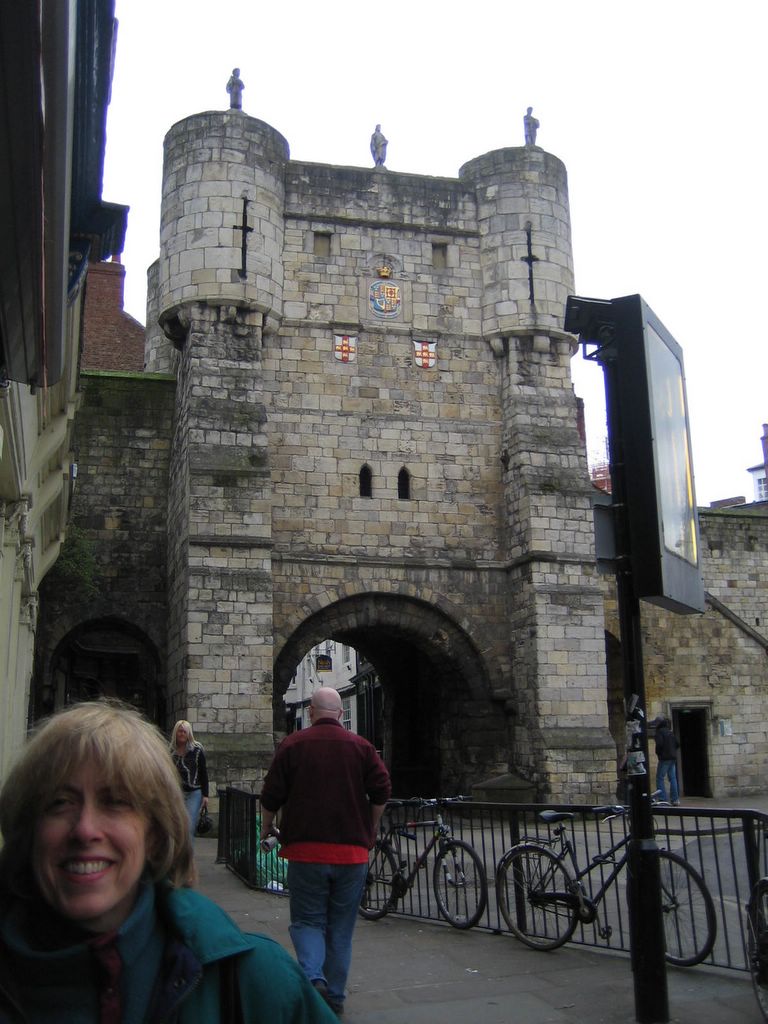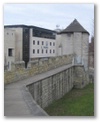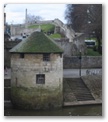On the walls of old York
Visited 19 March 2006

Well preserved: The birthday girl at the York Walls
York's walls are the best-preserved in England and each year attract about two million tourists to their well preserved and documented stones. Lucky for us, our mid-March march around the walls found them to be relatively empty; often we were the only ones in view on our stretch of path.
The walls began with the Romans using wood to fortify their legionary fort in the Northeast corner of what was to become York. Later they converted these to stone as the town (called Eboracum) became the dominant town of the North. In the 9th century, the Vikings covered the Roman walls with earth. Because it had the best organized resistance, York suffered most dearly of all the English cities under the 11th century Norman invasion, but the Normans further fortified the walls -- pretty much piling stone on top of what came before. In the 14th century, the threat of those rascally Scots required further strengthening of the walls. Most of what we walked on were these walls, somewhat restored.
York’s walls are not contiguous as York made use of the natural water defenses (rivers and swamps). But water was no way to stop North Sea invaders in boats called Vikings who renamed the city Jorvick from which the present name of York is derived.
Click here to start the walk around the walls or click on any picture below to take a shortcut. (If you hold your mouse over the picture for a minute, it might tell you what you’re going to see). Push PF11 right now so that you will see more of each photo.
For more narrative on York, see our description web page by clicking here.
Home
Page | Travel Index | About
Us | Contact Us | Search
our site

















































